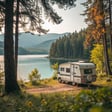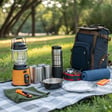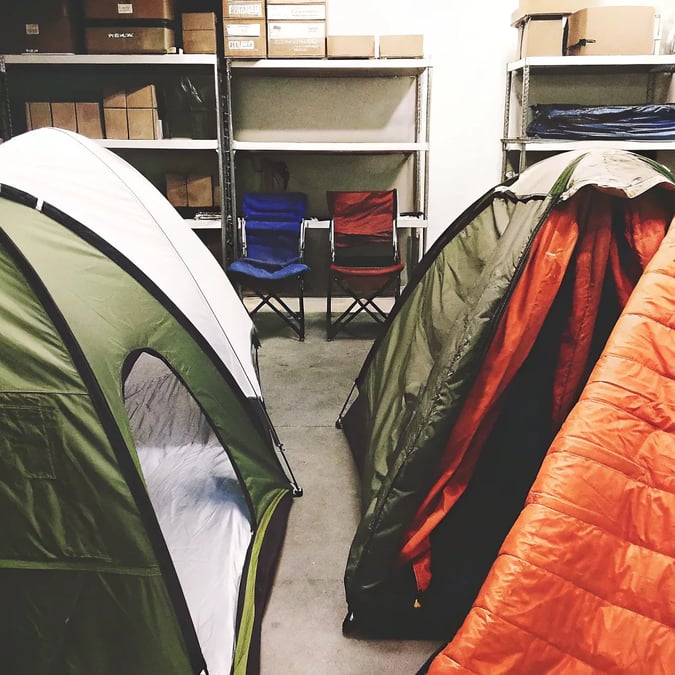
Packing away camping gear for the off-season requires more thought than simply tossing everything into the basement or garage. I learned this lesson the hard way last year when my favorite tent developed mold and my sleeping pad lost its bounce after improper winter storage. Properly storing your outdoor equipment not only extends its life but also saves you money and ensures your gear is ready when adventure calls again.
Clean Everything Thoroughly Before Storage
Before tucking away your camping equipment for the season, cleaning is non-negotiable. Dirt, moisture, and food particles left behind can lead to mold, unpleasant odors, and even attract pests.
"I once skipped cleaning my cookware properly and opened my storage bin the next spring to find a mouse had made a home in it," shares one Reddit user from the r/camping community. "Never again!"
Here's how to clean different gear types:
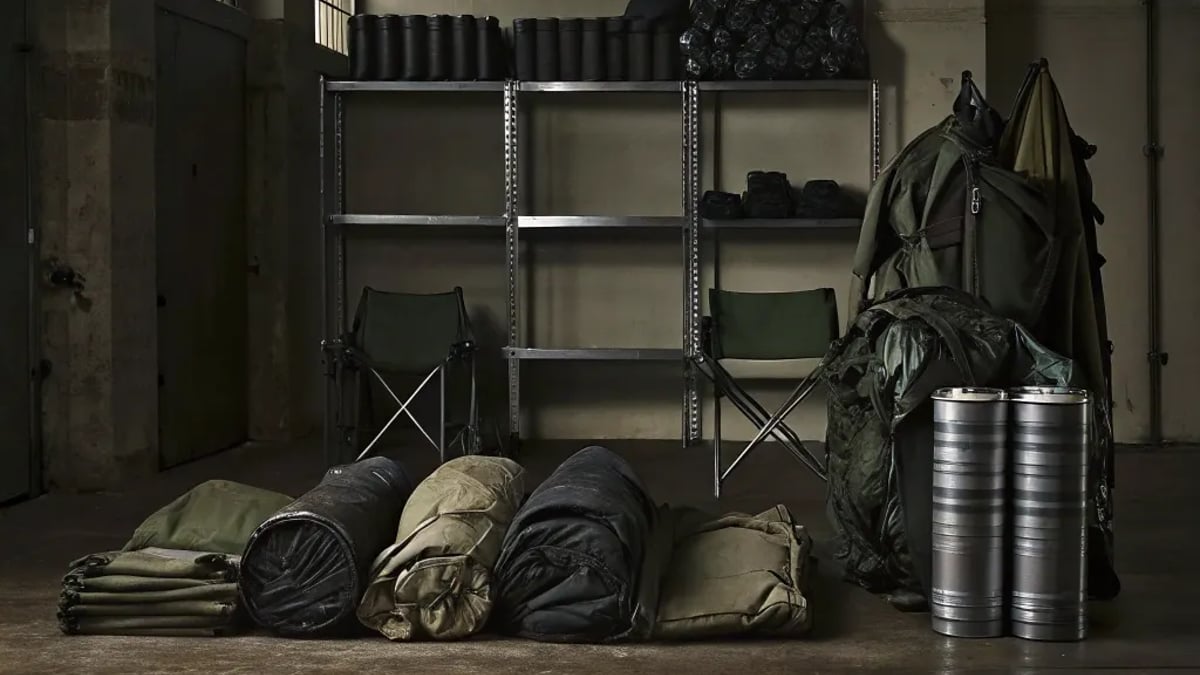
Tents and Tarps
Set up your tent one last time, not just to clean but to inspect for any damage that needs repair before storage. Sweep out debris and gently wash with non-detergent soap and lukewarm water. The critical part most campers miss is ensuring it's 100% dry before packing away.
"I hang my tent in the shower for a day after washing it, then set it up in my living room overnight to ensure it's completely dry," notes a city apartment dweller on Reddit. "My roommates think I'm crazy, but it beats buying a new tent every couple years."
Sleeping Bags and Pads
Sleeping bags deserve special attention. According to outdoor experts at As The Magpie Flies, "Store your sleeping bag in a large mesh sack or hang it in your closet. If you store a sleeping bag compressed in its stuff sack, you'll damage the insulation over time."
For sleeping pads, clean with mild soap, dry completely, and store unrolled with valves open when possible. This prevents the foam inside from developing permanent creases that reduce insulation effectiveness.
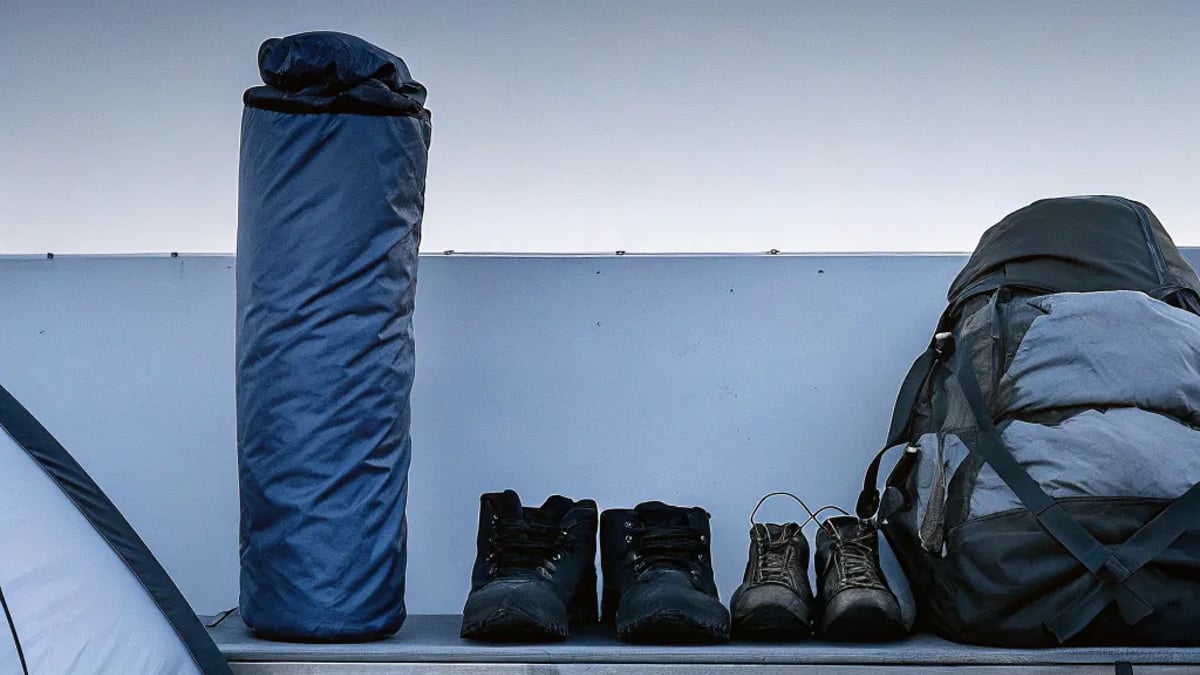
Proper Storage Containers Matter
The containers you choose can significantly impact gear longevity. Clear plastic bins with secure lids are ideal for most camping equipment, allowing you to see contents while protecting from moisture and pests.
However, not everything should go in airtight containers:
- Tents and rainflies benefit from breathable storage bags
- Sleeping bags need large mesh or cotton storage sacks
- Backpacks should hang or stand upright, not compressed under other items
"I've started using vacuum bags for soft items like clothing and towels, but never for technical gear with insulation or waterproof membranes," explains a storage expert from Sparebox Storage. "The compression can permanently damage the materials."
Where to Store: Location Considerations
Where you store your camping gear is just as important as how you store it. The ideal storage location maintains relatively stable temperature and humidity levels.
Avoid These Storage Locations
- Uninsulated garages or sheds (temperature fluctuations damage materials)
- Damp basements (promotes mold growth)
- Attics (extreme heat can degrade synthetic materials and adhesives)
- Direct sunlight (UV damage to fabrics and plastics)
"I damaged a $300 ultralight tent by storing it in my garage through a Michigan winter," laments one Reddit user. "The temperature swings caused the waterproof coating to crack and peel."
For apartment dwellers with limited space, under-bed storage containers work well for sleeping bags and clothing, while closet tops can accommodate lighter items. Some creative campers even use gear as temporary décor—hanging snowshoes or vintage camp lanterns on walls during off-season.
Special Considerations for Technical Gear
Electronics and Batteries
Remove batteries from headlamps, lanterns, GPS devices, and other electronics before storage. As noted by Daffodil Storage, "Corrosion or leaks from the batteries can damage the inner workings of your stored devices."
Store electronics in anti-static bags with silica gel packets to absorb any moisture.
Stoves and Fuel
Camping stoves require special attention:
- Clean thoroughly, removing all food residue
- Run the stove until all fuel is burned out of the line
- Disconnect fuel canisters and store separately
- Store in a well-ventilated area away from heat sources
Never store partially used fuel canisters indoors. Instead, use them completely or dispose of them properly according to local regulations.
Hiking Boots and Footwear
Clean thoroughly, removing all mud and debris. Apply appropriate conditioner to leather boots, then store in a climate-controlled environment with boot trees or stuffed with acid-free paper to maintain shape.
How Do I Prevent Mold and Mildew During Storage?
This is perhaps the most common question for off-season storage. Moisture is the enemy of almost all camping gear, causing mold, mildew, and material deterioration.
The key prevention steps include:
- Ensure everything is 100% dry before storage
- Use moisture absorbers like silica gel packets in storage containers
- Store in climate-controlled environments when possible
- Check gear occasionally during long storage periods
- Consider running dehumidifiers in storage areas during humid months
"I throw a few silica gel packets in each storage bin," shares an experienced camper. "They're cheap insurance against moisture damage, especially for expensive gear."
Organization Systems That Work
Creating an organization system saves time and frustration when camping season returns. According to Sparebox Storage, "Label your storage containers and keep an inventory list on your phone. This not only streamlines the process but also helps you identify any missing or damaged items before your next trip."

Consider organizing by:
- Trip type (backpacking, car camping, winter camping)
- Gear category (sleeping, cooking, shelter)
- Season of use (if you camp year-round but rotate gear)
Small Space Solutions
Living in an apartment doesn't mean you can't properly store camping gear. Many Reddit users in r/camping and r/CampingGear communities have shared creative solutions:
- Use vacuum bags for compressible items (not technical gear)
- Install ceiling-mounted pulley systems for canoes or kayaks
- Utilize under-bed rolling storage containers
- Repurpose gear as functional décor (camp chairs as extra seating)
- Rent a small climate-controlled storage unit with camping friends
"City living + growing family = not enough storage space," writes one Reddit user. "I've started using the space under my bed for sleeping bags and pads, and installed hooks in my closet ceiling for hanging backpacks."
Final Pre-Storage Checklist
Before closing those storage bins for the season, run through this quick checklist:
- Clean and completely dry all gear
- Repair any damage before storage
- Remove all batteries
- Store items uncompressed when possible
- Add moisture absorbers to containers
- Label containers clearly
- Store in appropriate climate-controlled location
- Create inventory list for next season
Taking these steps might seem time-consuming now, but you'll thank yourself when you pull out clean, functional gear ready for next season's adventures. Plus, proper storage significantly extends the life of expensive outdoor equipment—turning a few hours of careful preparation into years of additional use.
What's your biggest challenge when storing camping gear? Many outdoor enthusiasts find creative solutions when they share their specific storage dilemmas with the broader community.
Tags

About Evan Ridgewell the Author
Evan Ridgewell is a seasoned hiking enthusiast with over a decade of experience traversing the world's most challenging trails. His in-depth reviews of hiking gear focus on durability and performance in extreme conditions, making him a trusted source for outdoor adventurers.
Recommended Articles
Arthritis Creams People Swear By for Real Relief
Discover popular arthritis creams that provide effective relief from joint pain and inflammation. Find out which ingredients to look for!
Early Buyers Say This Tiny Camper Changed Their Weekend Trips
Discover how tiny campers enhance weekend adventures with freedom, comfort, and affordability. Hear from early buyers who embraced the lifestyle.
These Clever Camping Gadgets Will Change How You Pack
Explore innovative camping gadgets that simplify packing and enhance your outdoor experience with essential gear for your next adventure.
The Tiny Camper Trend That’s Exploding in 2025
Discover the tiny camper trend in 2025, focusing on sustainable adventure and space-efficient designs for modern travelers.
Drama Movies That Moved Audiences: Critically Acclaimed List
Discover a list of drama films that have not just entertained but profoundly moved audiences, redefining cinema with their powerful storytelling and emotional depth. From timeless classics like "Schindler's List" to contemporary masterpieces such as "Moonlight" and "Parasite," this captivating article explores how these films connect us through universal human experiences, making them unforgettable and eternally relevant.

